
Honeypot ants, also called honey ants, are ants which have specialized workers that consume large amounts of food to the point that their abdomens swell enormously. Other ants then extract nourishment from them, through the process of trophallaxis. They function as living larders. Honeypot ants belong to any of several genera, including Myrmecocystus and Camponotus. They were first documented in 1881 by Henry C. McCook, and described further in 1908 by William Morton Wheeler.

Carpenter ants are large ants indigenous to many forested parts of the world.

The banded sugar ant, also known as the sugar ant, is a species of ant native to Australia. A member of the genus Camponotus in the subfamily Formicinae, it was described by German entomologist Wilhelm Ferdinand Erichson in 1842. Its common name refers to the ant's liking for sugar and sweet food, as well as the distinctive orange-brown band that wraps around its gaster.

The black carpenter ant is one of the largest and most common species of carpenter ant native to the central and eastern United States as well as eastern Canada.

Camponotus atriceps, previously referred as C. abdominalis, is a species of carpenter ant, endemic to the Americas.
Camponotus irritans is a species of carpenter ant. It is found in many Asian and Oceanian countries.

Camponotus maculatus is a species of carpenter ant.
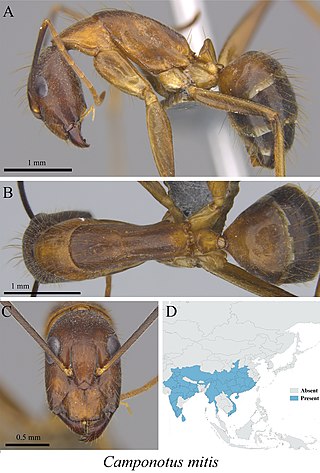
Camponotus mitis is a species of carpenter ant. It is found from India, Sri Lanka, and China.

Camponotus rufoglaucus is a species of carpenter ant. It is found from many Afrotropical, Indo-Australian, Oriental, Palaearctic regional countries.
Camponotus reticulatus is a species of carpenter ant. It is found from many Afrotropical, Indo-Australian, Oriental, Palaearctic regional countries and in Singapore.
Camponotus thraso is a species of carpenter ant. The type species is found from Sri Lanka.
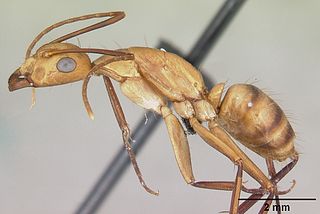
Camponotus variegatus is a species of carpenter ant.

Metapone greeni is a species of ant of the subfamily Myrmicinae which can be found in Sri Lanka.
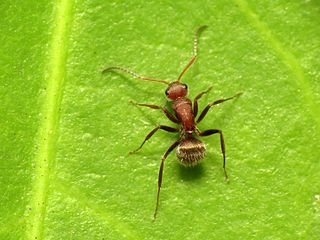
Camponotus planatus, known generally as the compact carpenter ant or short carpenter ant, is one of three Camponotus species that is polygynous, or has more than one queen. It is a species of ant.

Camponotus vicinus is a species of carpenter ant widespread throughout western North America; it is found from Alaska, south to Mexico, and east to Texas and Manitoba. Unlike its wood-nesting relatives, C. vicinus is typically found nesting in the soil under stones and other objects.
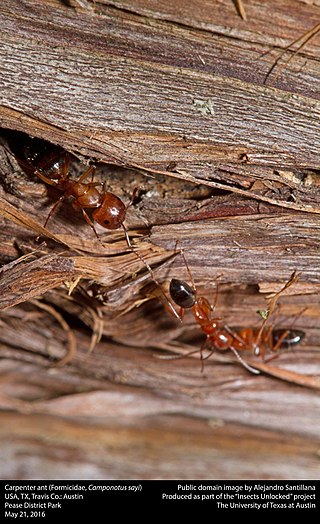
Camponotus sayi is a species of carpenter ant native to the southwest United States, northern Mexico, and possibly North Dakota, Ontario, Mississippi, North Carolina, South Carolina, and Florida.

Colobopsis is a genus of ant in the subfamily Formicinae. This genus was first described in 1861 by Mayr and contains 95 species. The type species is Colobopsis truncata.
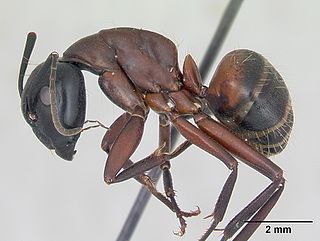
Camponotus ligniperda, the brown-black carpenter ant, is a common species of carpenter ant distributed widely throughout Europe. Found in a variety of woodland habitats, they commonly nest on the ground in dry tree stumps, dead fallen trees, or beneath stones and wooden logs that are partially buried. C. ligniperda is an ecologically dominant species wherever it is found due to both its large size and particularly aggressive nature.

Camponotus sericeiventris, the shimmering golden sugar ant, is a species of carpenter ant native to large parts of Central and South America.















